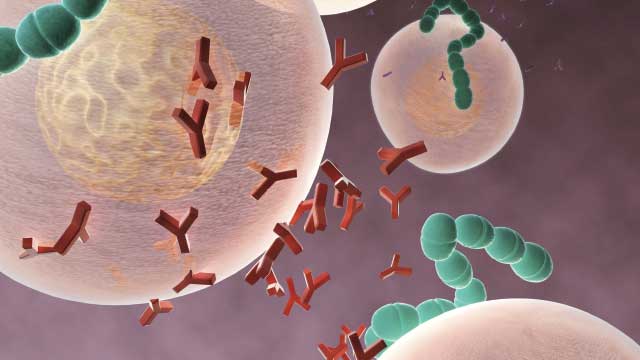Highlights
- •Six human mAbs target five distinct sites on EBV gH/gL
- •Some of these antigenic sites match sites of vulnerability on other herpesviruses
- •Each mAb neutralizes EBV infection and blocks virus-cell fusion
- •mAb 769B10 inhibits viremia and prevents lymphoma in an animal EBV challenge model
Summary
Epstein-Barr virus (EBV) is nearly ubiquitous in adults. EBV causes infectious mononucleosis and is associated with B cell lymphomas, epithelial cell malignancies, and multiple sclerosis. The EBV gH/gL glycoprotein complex facilitates fusion of virus membrane with host cells and is a target of neutralizing antibodies. Here, we examined the sites of vulnerability for virus neutralization and fusion inhibition within EBV gH/gL. We developed a panel of human monoclonal antibodies (mAbs) that targeted five distinct antigenic sites on EBV gH/gL and prevented infection of epithelial and B cells. Structural analyses using X-ray crystallography and electron microscopy revealed multiple sites of vulnerability and defined the antigenic landscape of EBV gH/gL. One mAb provided near-complete protection against viremia and lymphoma in a humanized mouse EBV challenge model. Our findings provide structural and antigenic knowledge of the viral fusion machinery, yield a potential therapeutic antibody to prevent EBV disease, and emphasize gH/gL as a target for herpesvirus vaccines and therapeutics.







